What should I wear in Pakistan?
I’m frequently asked what visitors to Pakistan should wear, and if you’re wondering the same thing, then good news – you’ve come to the right place! In this article (and with a bit of help from my family) I’ll be attempting to answer all of your questions!
The question of what to wear in Pakistan is usually asked for two reasons;
- What is culturally appropriate?
- What is weather-appropriate?
What is culturally appropriate?
Pakistan is officially an Islamic republic, however unlike Iran and Saudi Arabia it is not officially governed by Sharia law. Instead the Pakistani legal code is a mixture of British colonial law and local standards, often influenced by aspects of social sensibilities and religion. In this way, Pakistani laws regarding dress are similar to those in neighbouring India – they relate more to public decency than to religion.
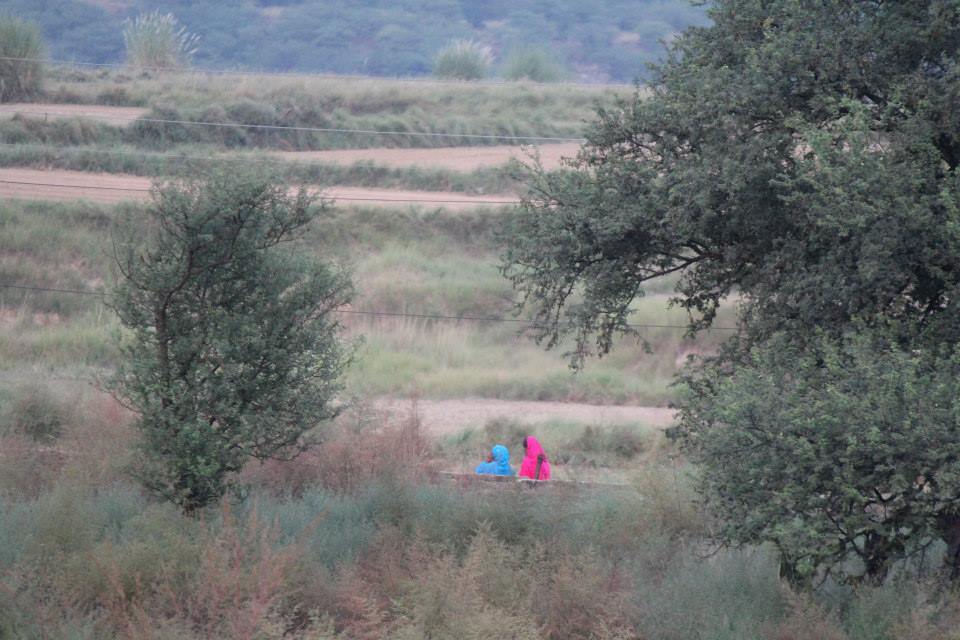
Pakistan is, on the whole, a conservative society
However, and this is a big however, Pakistan is overall a very conservative society. Although laws won’t prevent you from walking around scantily clad, many locals might. A foreign woman wearing a short skirt in Pakistan probably won’t have any legal issues – but she would create a scandal walking through all except the most liberal neighbourhoods. And the dress code isn’t just limited to women – men, too, have to think twice about what they wear when heading to certain areas. The message here is that “just because you can, doesn’t mean that you should.”
In some ways, this makes it even more difficult to decide what to wear – while Iran might not be “free” in terms of dress, at least your dress code is being prescribed to you. In Pakistan, it’s a judgment call. After arriving many visiting women invest in a stylish shalwar kameez (flowing pant and tunic suit) or kurti (long top worn over jeans) – they’re fashionable, easy, breezy, and often inexpensive. Men, equally, might buy a shalwar kameez or a kurta (the male versions). But you might not want to wear it all the time, and that still leaves you stuck for the first few days before you hit the shops.
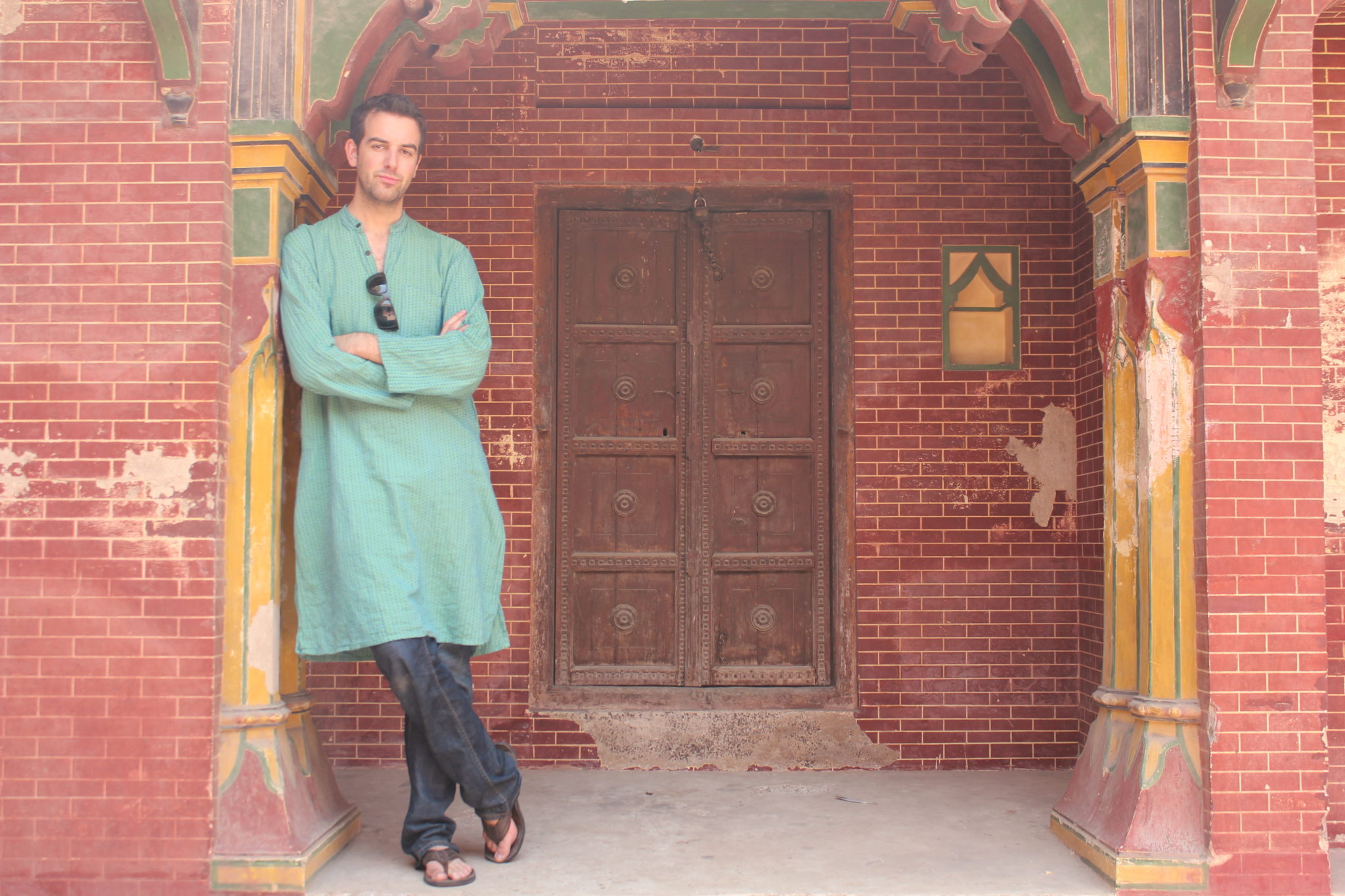
Me (many years ago) in a kurta with jeans at Lahore’s Wazir Khan Mosque
Flying in…
If you are visiting Lahore, Islamabad or Karachi, you can dress in modest ‘western’ fashion for your flight in. This is especially true in the upmarket neighbourhoods of each city. For women, this means a top with a high neckline and sleeves which cover your arms. Pants or jeans, or a skirt should cover to the ankles. All clothes should preferably be loose fitting, and if possible, the top should be long enough to cover to your mid-thigh.
In short, if your head, hands and feet are the only things visible, and the shape of your body is somewhat concealed, then you’re on the right track.
You should carry a scarf or shawl of some sort to cover the shape of your chest. If you wander into a more conservative neighbourhood, or if you’re invited to some sort of function where other women are covering their heads, you too can use it to blend in and show respect.

Modern Pakistani wear
For men, the job is unsurprisingly easier – but not a carte blanche to wear what you like. The shorts and singlet tops you were wearing on the beach in Bali aren’t really acceptable here. You might see some well-to-do locals fashionably wearing shorts, and in the hot weather the farmers might walk around in a singlet top (bunyan, in Urdu), but the average Pakistani man still covers his shoulders and legs when out and about.
Take your cues from my brother Josh and his gorgeous girlfriend Sarah, who are ready for Cancun, but not so much for Karachi;
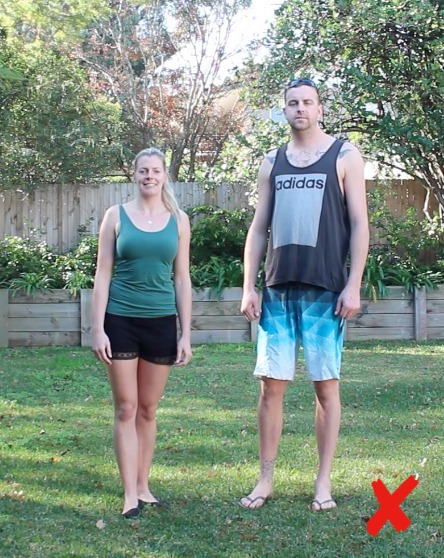
And here, where they are Pakistan appropriate;
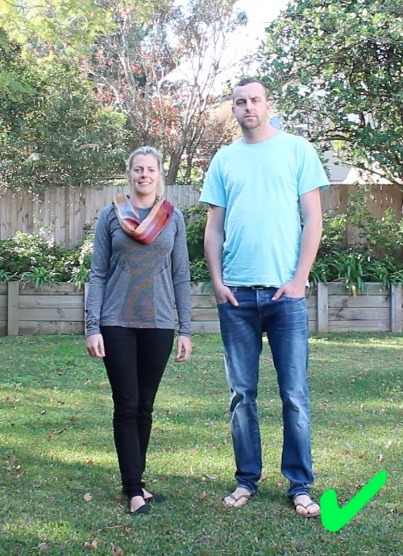
Beyond the cities: shalwar kameez
Going out of the major cities, however, you’ll want to blend in more – and this applies for men and women. This is a matter of cultural respect, lessening hassle, and safety – Pakistan is a safe enough place to visit, but no need to stick out in conservative, untouristed and often impoverished communities.
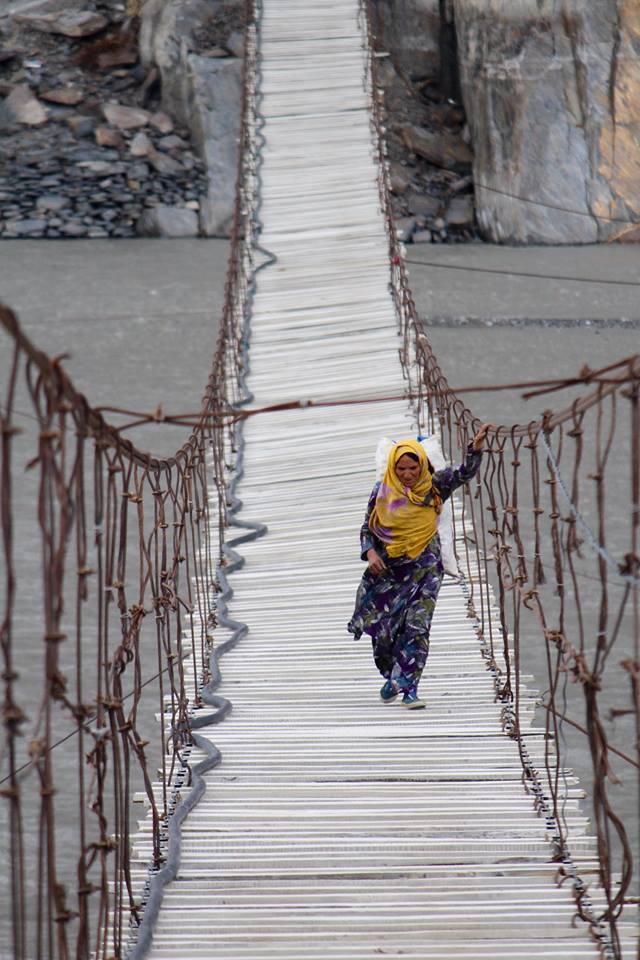
Local woman crossing the Hussaini Bridge in a shalwar kameez and dupatta
To blend in, you’ll need those shalwar kameez I mentioned earlier. Buy them in the cities – a cheap one in a plastic packet from a market will cost around Rs. 800 ($8) for the loose fitting top (kameez) and baggy drawstring pants (shalwar), and ladies will also receive a long matching shawl (dupatta). A tailored one will cost around Rs. 800 – 1,500 for the material, and another Rs. 1,000 to stitch (total $25) – it will fit better, but will take up to a week to stitch. If you go to the boutiques like Junaid Jamshed or Khaadi you could easily spend Rs. 4,000 – Rs. 8,000 ($40 – $80) for a contemporary fashion piece.
Out of the cities, female travellers will do well to take their cues from their surroundings. If you’re the only female on the street with your hair showing, or if you are the only woman on the bus and you’re getting noticed, it’s time to drape the dupatta over your head.
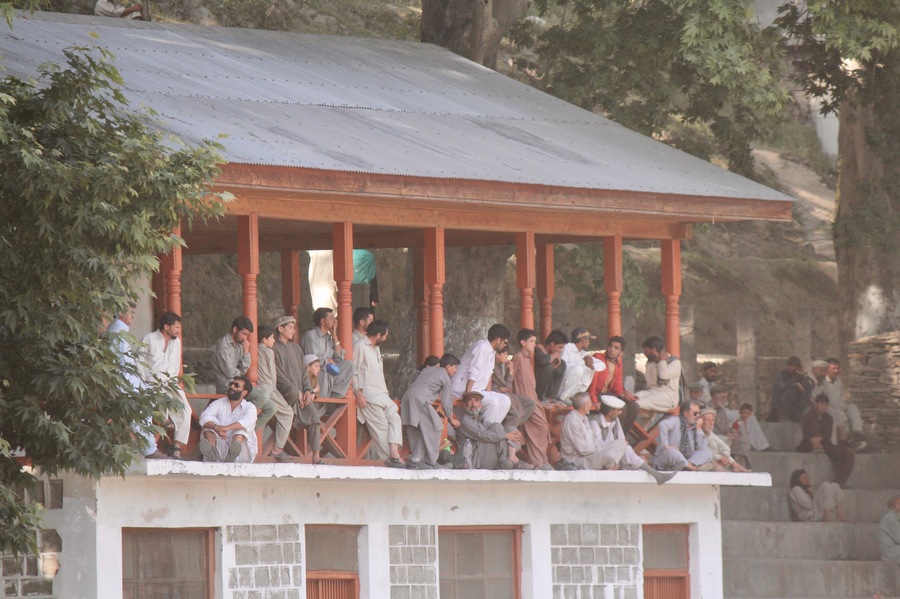
Spot the woman! jk there are none… A polo match in Chitral might not be the best place to push the boundaries.
What about the climate?
Pakistan experiences a wide range of climatic conditions, often at simultaneously in different locations. It is important to pack appropriately.
Broadly speaking, it depends where and when you are going;
In the mountains: In summer (June – September) it’s mild to warm (15 to 30 degrees Celsius) during the day, and cold (below 10 degrees) at night. In winter (October – May) it’s very cold (below 10 degrees, and often below zero) during the day, and even colder at night – entire towns get snowed in for months.
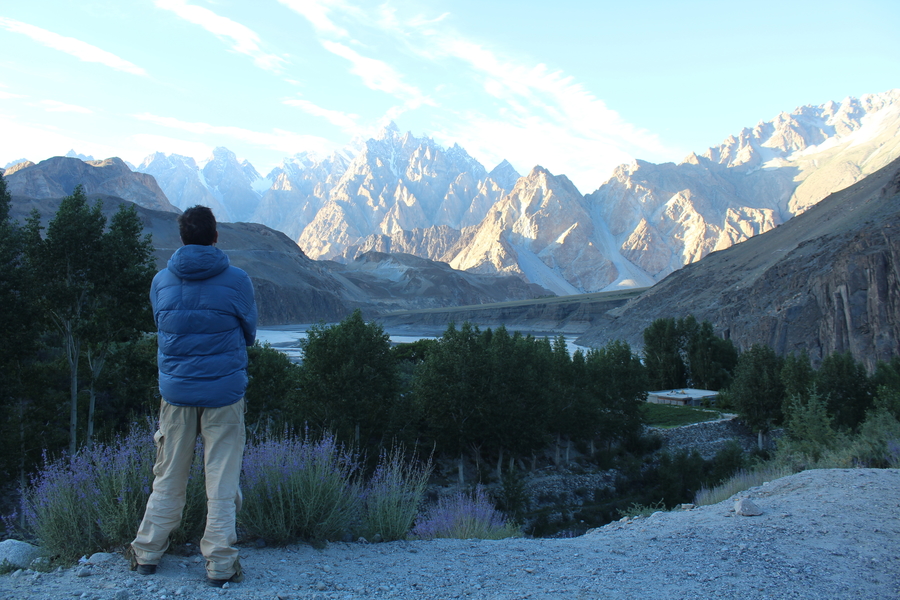
All rugged up in Hussaini, in the northern areas
Away from the mountains: In summer (April – September) it’s hot, often very hot (30 to 50 degrees Celsius) during the day, and still warm (around 30 degrees) at night. In winter (October – March) it’s cool (15 to 25 degrees) during the day, and surprisingly cold at night (often below 10 degrees).
The deserts in southern Punjab and Sindh, and the city of Karachi, are the only places that never really cool down in the winter – Karachi frequently still gets 30 degrees Celsius in the ‘depths’ of winter.
Most of Pakistan experiences high humidity during the monsoon in July and August; cotton is your friend, and loose, baggy outfits are not just culturally appropriate, but weather appropriate too.
These are broad strokes, however, and it pays to do further research, especially if you’re heading beyond the major settled areas – obviously temperature drops with altitude, and K2 Base Camp at 5,600m above sea level is much colder than the nearest town Skardu at 2,200m.

Dressed for the desert in Interior Sindh
For most visitors, Pakistan is undoubtedly a tricky place to pack for, but it needn’t be stressful. Most locals are very friendly and forgiving of cultural faux pas. What to wear in Pakistan is not definitive, but is aimed more at deflecting attention and respecting the local culture than conforming to any religious laws.

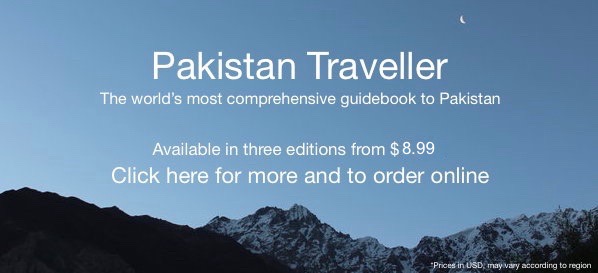



a couple of cool dudes in that last shot.
So… you’re saying, and obviously I’m adding context here, but hot pants are not advisable?
hahaha – dressed to kill, would you say?
And yeah, you can’t get your hot pants out, I’m afraid!
Hi Tim. Came across your blog via dawn.com. I am a born-and-raised Pakistani (from Islamabad) who’s lived in the US now for 20 yrs. I go back to visit annually with my wife and kids in tow. Bravo on your blog! This article is a fantastic primer for new visitors. I especially found your pictorial comparison of socially-acceptable outfits hilarious and accurate. Keep up the good work!
Hi Usman! Thanks for the message! And thanks for your kind words – it means a lot!! All the best!
very worthy piece of info.
I suggest that if you are still in Lahore then do visit two less popular yet very very Beautiful places. One is Khawaja Mehmud Shrine(it is kind of a tomb) and Sher Singh Baradari. Plus if you want to see a very unusual tomb where no one can see the grave then you can visit Cypress tomb.
Thank you for reading! I’ll look into these!